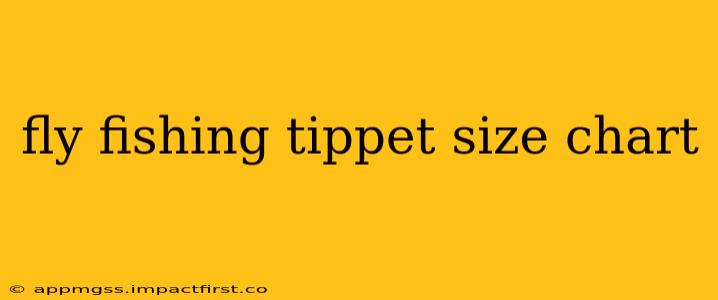Choosing the right tippet size is crucial for successful fly fishing. A tippet that's too heavy will spook wary fish, while one that's too light will break easily. This comprehensive guide explains tippet sizes, their uses, and how to select the appropriate size for various situations. We'll also address some frequently asked questions to ensure you're fully equipped to tackle your next fishing trip.
Understanding Tippet Sizes and Their Uses
Fly fishing tippet is measured in diameter using a system of numbers, with smaller numbers indicating thicker tippet. This might seem counterintuitive at first, but it's a standard convention in the fly fishing world. For example, a 6x tippet is thinner than a 4x tippet.
Here's a breakdown of common tippet sizes and their typical applications:
-
6x - 8x (0.004-0.008 inches): These are the thinnest tippets and are used for extremely wary fish, in clear water, or with light flies. They're often used for trout in small streams or highly pressured waters. They are delicate and require extra care.
-
4x - 5x (0.008-0.011 inches): These are versatile tippets suitable for a wide range of situations and fish species. They provide a good balance between strength and invisibility. They are a great all-around choice for many anglers.
-
2x - 3x (0.011-0.015 inches): These heavier tippets are used when fishing in faster currents, with larger flies, or for larger, stronger fish. They offer increased strength but are less inconspicuous than finer tippets.
-
1x - 0x (0.015+ inches): These are the thickest tippets and are generally used for very large fish or in challenging conditions where heavy leaders are needed. They are less often used in situations where stealth is paramount.
Remember that tippet strength is affected by factors such as knotting and the condition of the tippet material. Avoid kinks or damage to your tippet to maintain its strength.
What Tippet Size Should I Use?
The ideal tippet size depends on several factors:
- Target Species: Larger, stronger fish generally require thicker tippets.
- Water Clarity: Clear water necessitates thinner tippets for maximum invisibility.
- Fly Size: Larger flies usually call for heavier tippets.
- Current Speed: Stronger currents may necessitate thicker tippets to withstand the force.
- Fishing Technique: Some techniques (e.g., nymphing) may benefit from slightly heavier tippets.
How to Choose the Right Tippet for Different Fish Species
Choosing the right tippet size is critical for successful fishing. Here's a general guide:
- Trout (small streams): 6x-8x
- Trout (larger rivers): 4x-5x
- Bass: 3x-4x
- Salmon/Steelhead: 2x-3x (and potentially even thicker depending on size and water conditions)
What is the difference between leader and tippet?
The leader is the length of fluorocarbon or monofilament line attached to your fly line, which tapers down in diameter to create a smoother presentation. The tippet is the final section of the leader, the very end that your fly is attached to. It's typically of a uniform diameter and is usually much thinner than the leader. The leader's job is to transition from the thick fly line to the thin tippet, allowing for a more natural presentation of the fly. The tippet is the delicate connection between the fly and the leader, often sacrificed when a fish is hooked.
How long should my tippet be?
A good rule of thumb is to have a tippet length of approximately 3-6 feet. Shorter tippets offer better control, while longer tippets can be beneficial for presenting flies in specific ways or for fishing in strong currents. The length is mostly a matter of personal preference and fishing style, but it should never be so short that it impedes the proper function of the fly.
What materials are tippets made of?
Fluorocarbon and nylon are the most common materials for fly fishing tippets. Fluorocarbon is denser than water, making it almost invisible underwater, and is very strong. Nylon is often a more economical choice, offering good strength and knot strength. The choice depends on individual preferences and fishing conditions.
This guide provides a solid foundation for understanding tippet sizes and their applications. Remember that practice and experience will refine your ability to choose the optimal tippet size for any given fishing scenario. Happy fishing!
